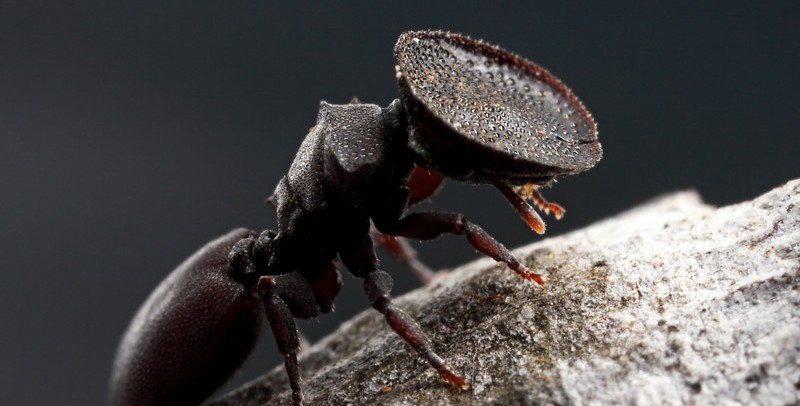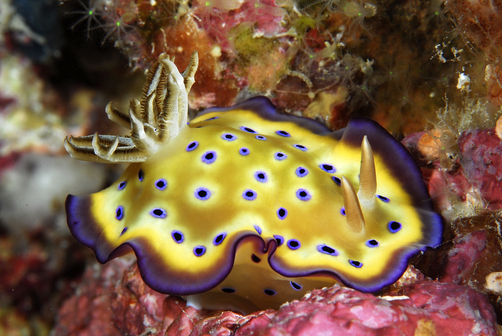The intricate eusocial lifestyle of ants is as fascinating in its uniqueness, as it is in its likeness to human societies. From fungus farming, to aphid ranching, to complex raiding tactics, parallels between ants and humans are inescapable. Although individual ants have next to no large-scale impact, working together a cohesive force capable of shaping entire ecosystems is formed: the colony. The success of ant colonies lies in the incredible selfless cooperation of individual ants for the good of the whole.

Like humans increase overall productivity by exchange of goods and services, ants increase colonial efficiency by dividing tasks among polymorphic castes. Each caste is responsible for a specific task, so body morphology evolved to best suit the caste function. While foraging worker ants are smaller and numerous, soldier ants are usually large and have powerful mandibles to defend the nest in case of an attack. Different environments have different selection pressures, and so ant caste morphology sees a great diversity of shapes and functions across the globe. One of the most robust defensive mechanisms within ants is the hardened head plate of Turtle ants.

Head First
Turtle ants are tree-dwellers and inhabit the canopy in equatorial tropics of North and South America. While most ants diligently construct or dig out their nests, some turtle ants have found a clever way to avoid the arduous building process. When searching for an appropriate nesting site, turtle ants look for branches that have been killed by wood boring beetles. These beetles excavate tunnels in the wood with their strong mandibles, and the turtle ants take over the hollowed out tunnels themselves. This not only saves time, but the wooden walls of their home are too tough for most insect predators to break through. Other turtle ants have been described to chew out the tunnels in the wood themselves with short convex mandibles.

But not every tunnel will fit the job. The defense tactic of turtle ants relies on burrows with an entrance diameter that precisely matches the size of the soldier ant caste’s head. The head of a turtle ant soldier is a highly sclerotized circular disc that acts as a door-like barricade during an attack. As the soldier ant backs into the tunnel, the disc snugly fits the opening, effectively excluding hopeful predators. Experimental work has shown that a colony will not settle a branch unless the entrance properly fits the soldier’s head, demonstrating the reliance of turtle ants on this defense. However, if an entrance is made larger after the ants have settled, two soldier ants may align themselves back to back so that both head discs cover the opening.

The tactic of defending a burrow with ones own body is called phragmosis, and is not exclusive to turtle ants. The Black Rugose Trapdoor spider, for example, has a hardened abdomen that it uses in an analogous fashion, giving it its name.

Back to the Roots
Living in a 30m high arboreal environment, accidental or predator induced falling is inevitable and could leave the ant unable to find the way back to the nest. Being stranded in the dangerous insect world below is almost certain demise for a lone ant, so a safe way home is important for colonial survival. While turtle ants do not possess wings, they have evolved an alternative way to navigate the skies in the event of a fall.
Using their legs and enlarged heads turtle ants (along with some other arboreal ants) are able to control their fall with remarkable precision, essentially gliding back to the roots or trunk of their tree. Experiments have shown that the aim of gliding ants incredibly precise, with 85% of ants making a successful landing on the trunk of their nest tree. The ants navigate using visual cues, and are able to reposition themselves mid-flight to direct the glide path towards the tree.
Fitting in Pays Off
Among the bustling metropolis of a Crematogaster ampla (not turtle ant) nest, certain members have a concealed identity and an ulterior motive. These intruders are so good at masking their true nature that even the native inhabitants see them as their own. This is a species of mimic turtle ant (Cephalotes specularis) that has adapted to look and behave like the ant Crematogastra ampla, and live along side it as a thieving social parasite. Social parasitism (when one animal exploits the lifestyle of another) is common in animals, but not often to this degree of perfection.

The mimic turtle ant nests along side the host, and follows the chemical pheromone trail laid by foraging ants to sources of food. The job of the mimic is very risky, as the host species is aggressively territorial, and upon finding non-mimic turtle ants encroaching on resources, C. ampla will often dismember the intruder.
To avoid dismembering, the mimic ants have to blend in visually and behaviorally. As opposed to the rough and hairy surface of most turtle ants, mimic ants have a black shiny abdomen to match the host. The low-lying body structure of turtle ants would also be conspicuous, so the mimics raise their abdomen when they are in the vicinity of their host. Despite these adaptations to fit in, the mimic ants have one undefended flank. They don’t have the same chemical scent as the host ant, making them vulnerable to tactile detection. If the host ant physically contacts the mimic, they will become aggravated and chase the intruder away. To avoid this, mimic ants often stay on the edges of the ant trail, minimizing chances of being smelled out.
The lesson is clear: laziness can get you by, but getting caught can be dismembering.
Sources:
Head First: Creighton, W. S. and R. E. Gregg, 1954. Studies on the Habits and Distribution of Cryptocerus Texanus Santschi (Hymenpotera: Formicidae), Psyche, 61:2 41-57
Back to the Roots: Yanoviak S. P., Dudley R., and M. Kaspari, 2005. Directed Arial Descent in Canopy Ants. Letters to Nature, 433: 624-626
Fitting in Pays Off: Powell, S., Del-Claro, K., Feitosa, R. M., Brandão, C. R., 2014. Mimicry and Eavesdropping Enable a New Form of Social Parasitism in Ants. American Society of Naturalists, 184, 4: 500-509
Please visit http://www.alexanderwild.com for a whole whack of cool turtle ant photos.




 All sea slugs possess two chemosensory tentacles on their heads called rhinophores. As the tongue does in mammals, rhinophores are able to detect molecules dissolved in water, ultimately functioning as the smell and taste organs. Because sea slugs have poor (or no) vision, it is very important to have sensitive rhinophores in order to find food or detect pheromones of potential mates.
All sea slugs possess two chemosensory tentacles on their heads called rhinophores. As the tongue does in mammals, rhinophores are able to detect molecules dissolved in water, ultimately functioning as the smell and taste organs. Because sea slugs have poor (or no) vision, it is very important to have sensitive rhinophores in order to find food or detect pheromones of potential mates.


.jpg)
